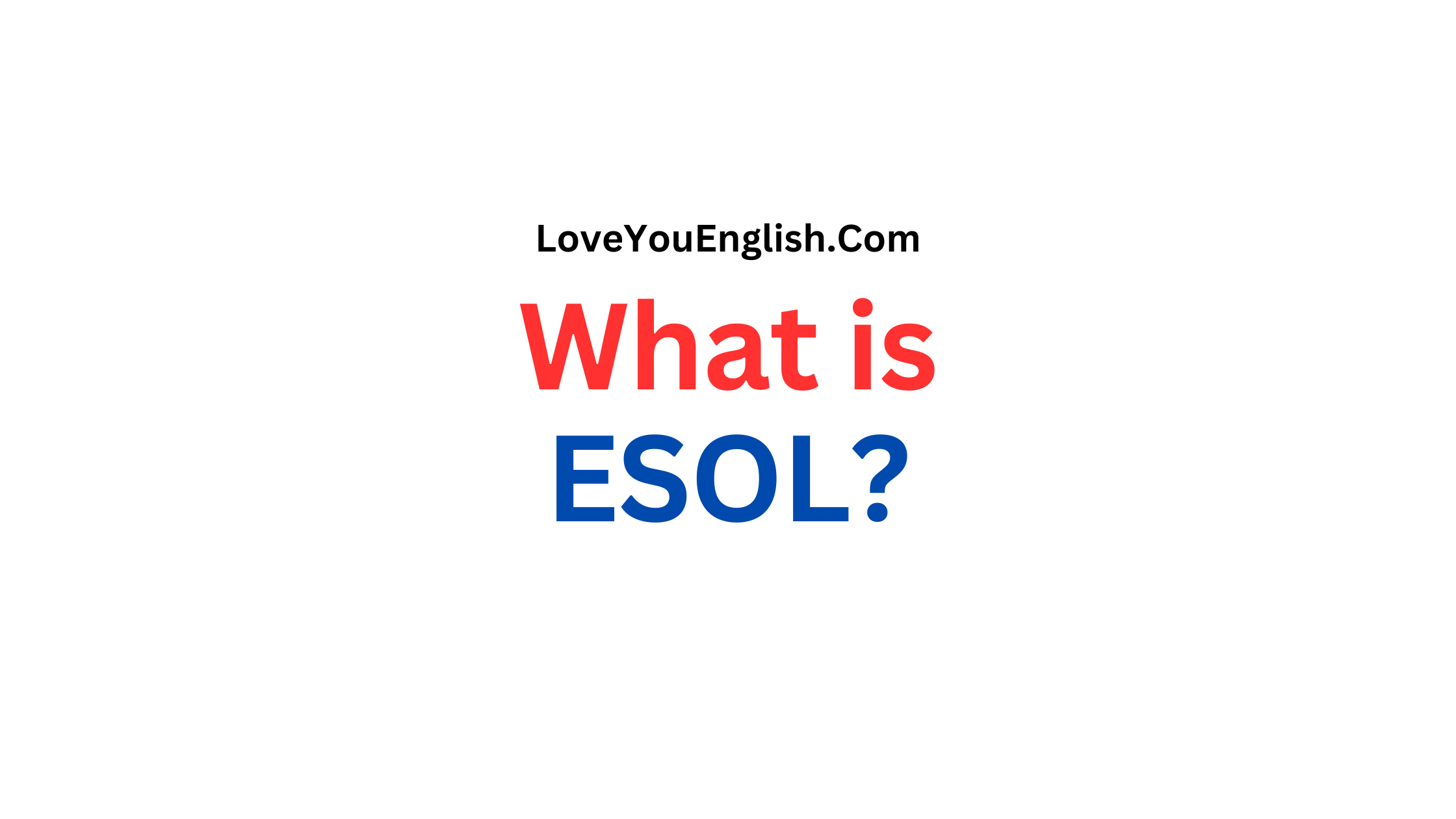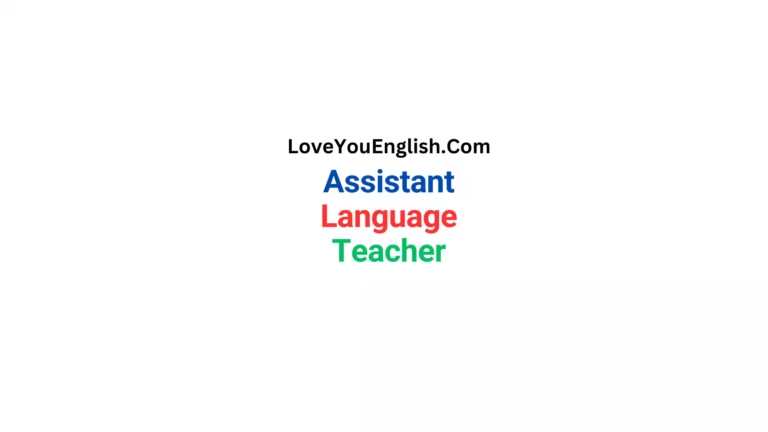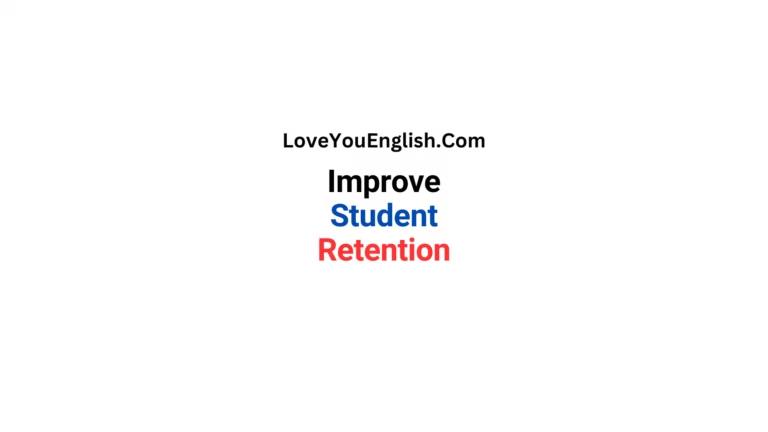What is ESOL? (With Essential Tips for English Learners)
Have you ever dreamed of speaking English confidently but felt lost about where to start? You’re not alone!
Learning a new language can feel like climbing a mountain. It’s exciting, but sometimes scary, too. If you’ve heard the term “ESOL” and wondered what it means, don’t worry—I’m here to explain it in the simplest way possible. Plus, I’ll share some easy, practical tips to help you learn English faster and enjoy the journey. Let’s get started!
What Does ESOL Mean?
ESOL stands for English for Speakers of Other Languages. It’s a way to describe programs, classes, or lessons designed to help people who don’t speak English as their first language.
Imagine you grew up speaking Spanish, Hindi, Arabic, or any other language—ESOL is there to teach you English so you can use it in your daily life.
ESOL isn’t just about memorizing words. It’s about helping you talk to people, understand movies, read books, or even get a job in an English-speaking country. Whether you’re a beginner or someone who knows a little English already, ESOL is like a friendly guide to make you better.
Think of it this way: English is a key that unlocks doors. ESOL hands you that key and shows you how to use it.
Who Needs ESOL?
You might be wondering, “Is ESOL for me?” Great question! ESOL is for anyone who wants to learn English but didn’t grow up speaking it. Here are some examples of people who might join an ESOL class:
- Newcomers: Maybe you just moved to a country like the United States, the UK, or Australia. You want to talk to your neighbors, shop at stores, or understand signs. ESOL helps with that.
- Students: If you’re studying in an English-speaking school or university, ESOL can make homework and classes easier.
- Workers: Many jobs need English. ESOL can teach you the words and phrases to shine at work.
- Travelers or Dreamers: Even if you’re not living in an English-speaking place, maybe you love English movies, songs, or want to travel. ESOL makes those dreams come true.
No matter your age or background, ESOL is for anyone ready to learn. It’s never too late!
How Does ESOL Work?
ESOL classes can look different depending on where you are, but they all have one goal: to help you use English in real life. Here’s what you might find in an ESOL program:
- Speaking Practice: You’ll learn how to say words clearly and talk to others. Teachers might ask you to chat about your day or play fun speaking games.
- Listening Skills: You’ll practice understanding English—like listening to conversations, songs, or even the news.
- Reading: From simple stories to forms and emails, ESOL teaches you how to read and understand.
- Writing: You’ll start with easy sentences and work up to writing letters or notes.
- Everyday English: Think shopping, asking for directions, or ordering food. ESOL focuses on what you need most.
Classes can be in person, online, or even one-on-one with a tutor. Some are free (like at community centers), while others might cost money (like private lessons). The best part? Teachers know you’re learning, so they’re patient and kind.
Why Is ESOL Important?
Learning English with ESOL isn’t just about words—it’s about building a better life. Here’s why it matters:
- Connection: English lets you meet new people, make friends, and feel less alone.
- Opportunities: Jobs, schools, and travel become easier when you know English.
- Confidence: Imagine ordering coffee or asking a question without fear. ESOL gives you that power.
- Understanding: Movies, books, and the internet open up when you know English.
For me, watching someone go from shy and quiet to laughing and chatting in English is pure magic. That’s what ESOL can do!
Essential Tips for English Learners
Now that you know what ESOL is, let’s talk about how to make learning English fun and fast. These tips are simple, and you can start today—no fancy tools needed. Ready? Here we go!
1. Start Small and Be Patient
Learning English doesn’t happen overnight. It’s okay to make mistakes—they’re part of the fun! Start with easy words like “hello,” “thank you,” or “please.” Say them out loud, even if it’s just to yourself. Little steps add up to big wins.
Try This: Learn 5 new words a day. Write them down, say them, and use them in a sentence. For example: “I like to eat apples.”
2. Listen to English Every Day
Your ears are your best friends when learning a language. Listen to English songs, cartoons, or podcasts. Don’t worry if you don’t understand everything—just let the sounds sink in.
Try This: Watch a kids’ show like Peppa Pig. The words are simple, and it’s fun! Repeat what you hear, like “Peppa loves muddy puddles.”
3. Speak, Even If You’re Nervous
Talking is the fastest way to get better. Yes, it might feel weird at first, but that’s normal! Speak to yourself, your pet, or a friend. The more you try, the easier it gets.
Try This: Practice saying “Hi, how are you?” to a mirror. Then try it with someone. Smile—they’ll love your effort!
4. Use Pictures and Apps
Words stick better with pictures. If you’re learning “cat,” draw one or look at a photo. Apps like Duolingo or Memrise are great too—they’re like games that teach you English.
Try This: Download a free app and spend 10 minutes a day on it. It’s like playing while learning!
5. Copy Native Speakers
Watch how people talk in English movies or shows. Notice their tone, their speed, even their faces. Copying them helps you sound natural.
Try This: Pick a line from a movie—like “I’ll be back” from Terminator—and say it like the actor. It’s silly but works!
6. Make It Fun
If learning feels boring, you’ll stop. Make it a game! Sing English songs, watch funny videos, or reward yourself with a treat after studying.
Try This: Learn the chorus of a song like “Twinkle, Twinkle, Little Star.” Sing it loud and proud!
7. Write a Little Every Day
Writing helps you remember. Start with one sentence, like “Today is sunny.” Later, try a short story or a note to a friend.
Try This: Keep a tiny diary. Write one thing you did today, like “I ate rice.”
8. Ask for Help
Don’t be shy—ask friends, teachers, or even strangers to correct you. Most people are happy to help, and you’ll learn faster.
Try This: Say to someone, “Can you help me with English?” Watch how kind they’ll be!
9. Think in English
This one’s a secret weapon. Instead of translating from your language, try thinking in English. It’s hard at first, but it makes you quicker.
Try This: When you see a dog, think “dog” instead of your word for it. Simple, right?
10. Celebrate Your Progress
Every step counts. Did you say “hello” without stumbling? Awesome! Did you understand a song? Amazing! Be proud of yourself.
Try This: At the end of the week, tell yourself, “I’m doing great!” You really are.
Common Challenges (And How to Beat Them)
Learning English isn’t always easy, but every problem has a fix. Here are some struggles you might face and how to handle them:
- “I’m Too Shy!” Start small—talk to yourself first. Confidence grows with practice.
- “I Forget Words!” That’s normal! Review them daily, and they’ll stick.
- “It’s Too Hard!” Break it into tiny pieces. Learn one thing at a time.
- “People Don’t Understand Me!” Keep trying—slow down and smile. They’ll get it.
You’re stronger than you think. Keep going!
Where to Find ESOL Classes
Ready to start? Here’s where you can look:
- Community Centers: Many offer free or cheap ESOL classes.
- Libraries: They often have programs or tutors.
- Online: Websites like Coursera, BBC Learning English, or YouTube have free lessons.
- Schools or Colleges: Check if they have ESOL for adults.
- Apps: Duolingo, Babbel, or HelloTalk are great for learning anywhere.
Ask around—someone will point you to a class near you!
Final Thoughts
So, what is ESOL? It’s your ticket to speaking English with confidence. It’s a helper, a teacher, and a friend all in one. Whether you want to chat, work, or explore the world, ESOL makes it possible.
Learning English is a journey, not a race. Take it one word, one smile, one day at a time. With these tips and a little courage, you’ll be amazed at how far you go. I believe in you—now go shine!
What’s your first step? Tell me in your heart (or out loud if you’re brave!). Let’s make English your superpower.
Explore more topics:
- Examples of Pronouns in Sentences
- Top Online Resources to Improve Your English Skills
- How to Write a Leave Email in English
- The Rise of Online English Teaching







